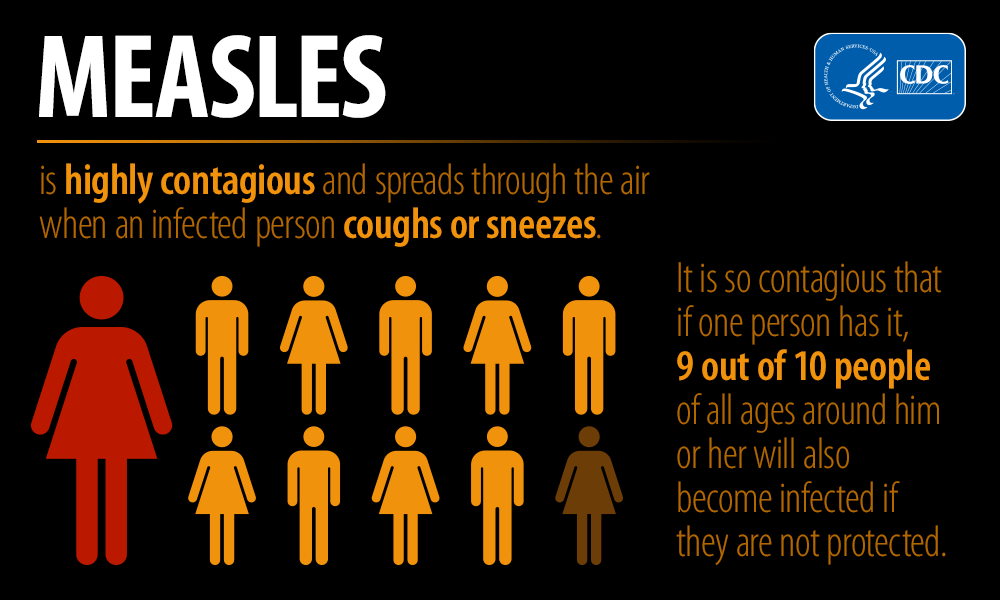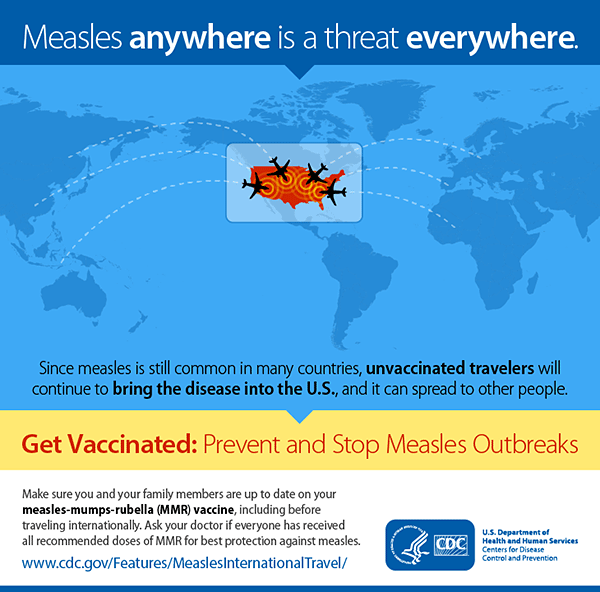Measles outbreaks are popping up across the United States. From January 1 to March 7, 2019, 228** individual cases of measles have been confirmed in 12 states: California, Colorado, Connecticut, Georgia, Illinois, Kentucky, New Hampshire, New Jersey, New York, Oregon, Texas, and Washington. Six outbreaks (defined as 3 or more linked cases) have been reported, in Rockland County, New York; New York City, New York; Washington; Texas; California and Illinois.
What Is Measles, and What Are the Risks?
Measles, also called rubeola, is a highly contagious respiratory infection caused by a virus. Symptoms of measles include fever, runny nose, cough, red eyes, sore throat, sensitivity to light, and a rash that spreads over the whole body. It is one of the most contagious diseases in existence—so contagious that if one person is infected, 90% of the people around them who are not immune will also contract it.

Why Are We Seeing More Cases?


What Can I/My Practice Do to Prevent Measles Among My Patients?
- Explain that MMR vaccine is the best protection against measles infection.
- Discuss the importance of MMR vaccine with parents. Listen and respond to parents’ questions. When parents have questions, it does not necessarily mean they won’t accept vaccines. Sometimes, they simply want your answers to their questions.
- Ensure all patients are up to date on measles, mumps, rubella (MMR) vaccine.
- Children need 2 doses of MMR: one dose at 12-15 months and another dose at 4-6 years.
- Before any international travel, infants 6-11 months need 1 dose of MMR vaccine, children 12 months and older need 2 doses separated by at least 28 days, and teenagers and adults who do not have evidence of immunity against measles need 2 doses separated by at least 28 days.
- Consider measles in patients presenting with febrile rash illness and clinically compatible measles symptoms (cough, coryza, and conjunctivitis), and ask patients about recent travel internationally or to domestic venues frequented by international travelers, as well as a history of measles exposures in their communities.
- Promptly isolate patients with suspected measles to avoid disease transmission and immediately report the suspect measles case to the health department.
- Obtain specimens for testing from patients with suspected measles, including viral specimens for genotyping, which can help determine the source of the virus. Contact the local health department with questions about submitting specimens for testing.
Additional Resources for Clinicians:
- Guidelines for patient evaluation, diagnosis and management
- Web tools for healthcare professionals
- Provider Resources for Vaccine Conversations with Parents
- Talking with Parents about Vaccines for Infants
- Preparing for Questions Parents May Ask
- Infant Immunization FAQs in English and Spanish
- Measles fact sheet for parents in English and Spanish
- Resources for parents (including printable fact sheets, posters, and infographics
